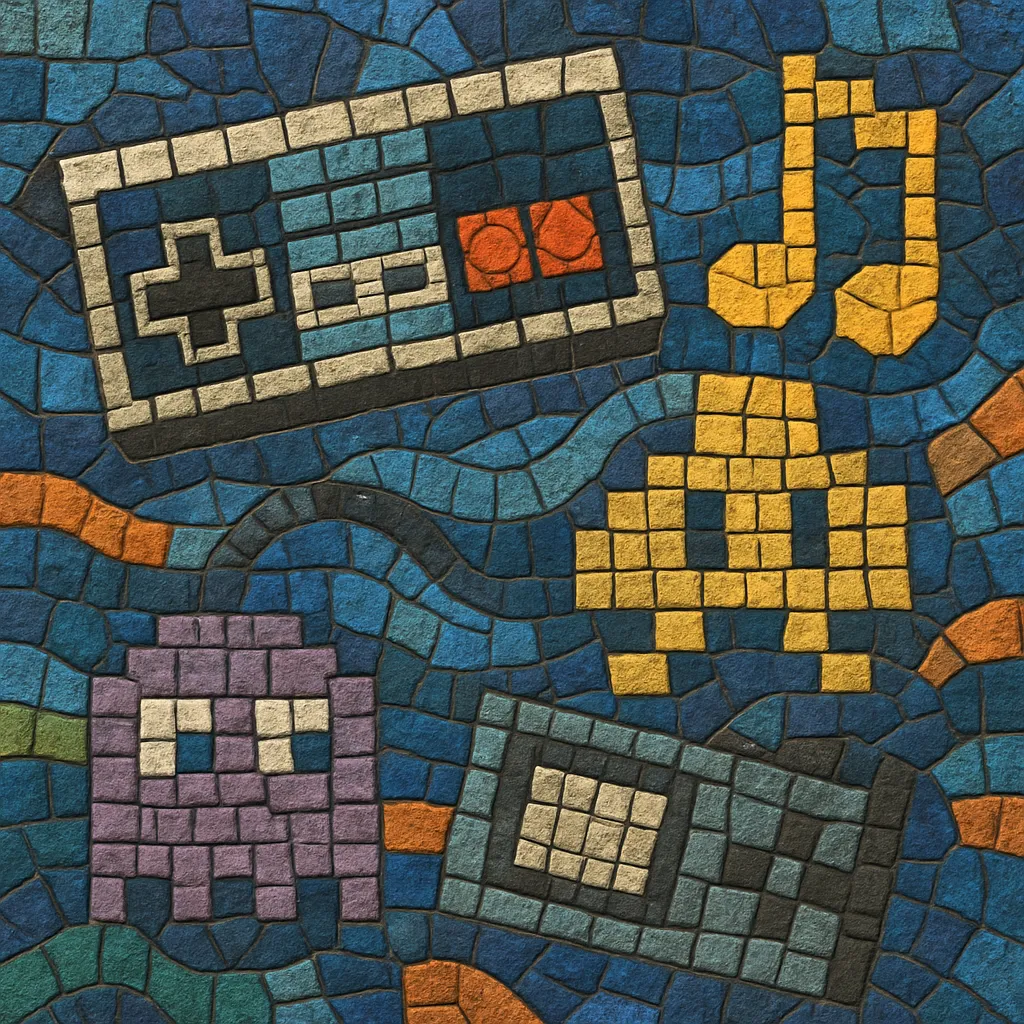Chiptune (also called chip music or 8-bit music) is a style of electronic music created with, or emulating, the programmable sound generator (PSG) and FM chips found in vintage game consoles and home computers such as the NES/Famicom, Game Boy, Commodore 64 (SID), Amiga, Atari ST, and others.
The sound palette is defined by simple waveforms (square/pulse, triangle, saw, noise), rapid arpeggios that imply chords on limited channels, pitch bends, duty-cycle modulation, and crunchy noise percussion. These constraints lend chiptune its bright, percussive, and highly melodic character, often evoking early video-game aesthetics.
While originally utilitarian—music for games and computer demos—the approach evolved into a standalone art form. Contemporary chiptune spans pure hardware-authentic tracks and hybrid productions that blend chip timbres with modern synthesis, drums, vocals, and mixing techniques.
Chiptune’s roots lie in the sound chips of early home computers and game consoles. Composers pushed limited hardware—such as the C64’s SID and the NES/Famicom’s APU—to create full scores with only a handful of channels. Notable figures include Rob Hubbard and Martin Galway on the C64, and Japanese game composers like Koji Kondo and Hirokazu “Hip” Tanaka on Nintendo hardware. Techniques such as rapid arpeggiation, duty-cycle modulation, vibrato, and clever noise-channel percussion emerged to overcome hardware limits.
Parallel to game development, Europe’s demoscene turned chip-based composition into a creative sport. On Amiga, Atari ST, and PC, musicians used trackers (SoundTracker, ProTracker, FastTracker, later Impulse Tracker) to write sample- and chip-style modules. The term “chiptune/chip music” gained currency in this milieu, where artists strove for maximal musicality under tight technical constraints, releasing music in disk mags and scene productions.
In the 2000s, dedicated tools (LSDJ and Nanoloop for Game Boy, Famitracker/DefleMask for NES and multi-chip targets) catalyzed a worldwide chiptune scene. Netlabels like 8bitpeoples helped formalize the genre beyond game OSTs. Artists began performing live with handhelds and vintage machines, while others rendered authentic chip timbres with software emulation.
Chiptune now ranges from purist, hardware-accurate tracks to hybrids that merge 8-bit timbres with modern drums, bass, vocals, and synthesis. Its melodic directness and nostalgic color have influenced hyperpop, digicore, and even club and techno aesthetics. Festivals, chip shows, and online communities sustain a vibrant culture of releases, hardware mods, and cross-genre experimentation.


